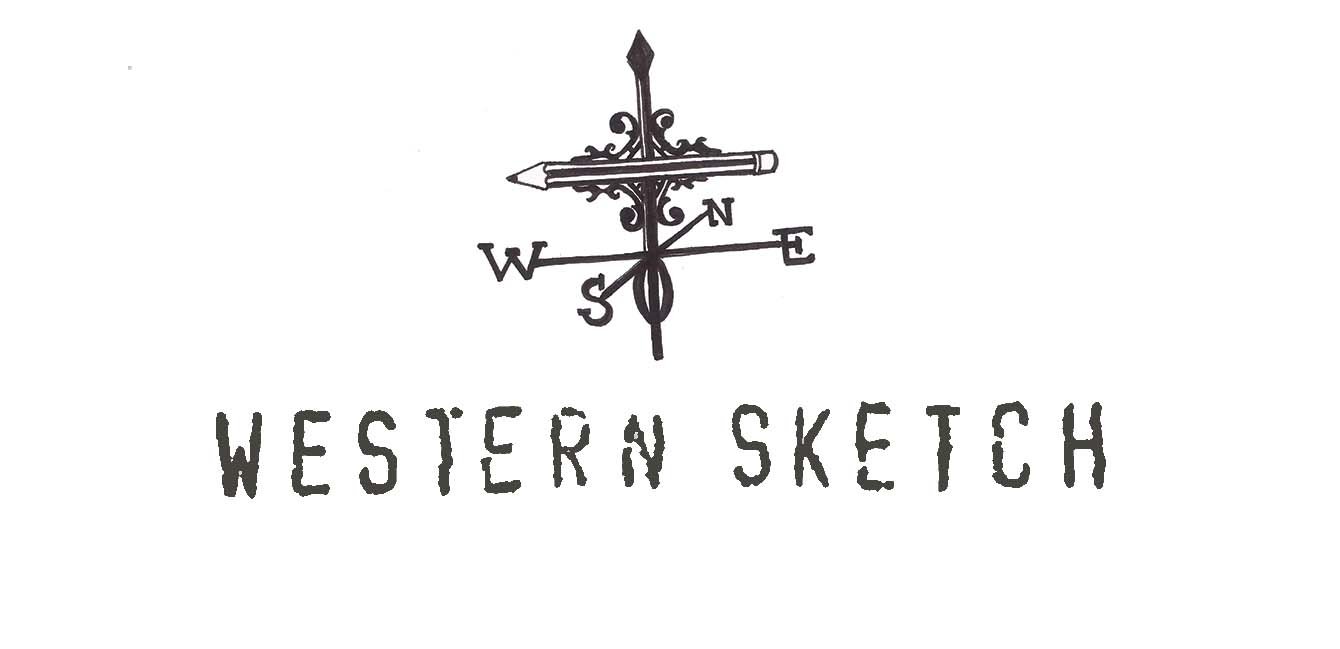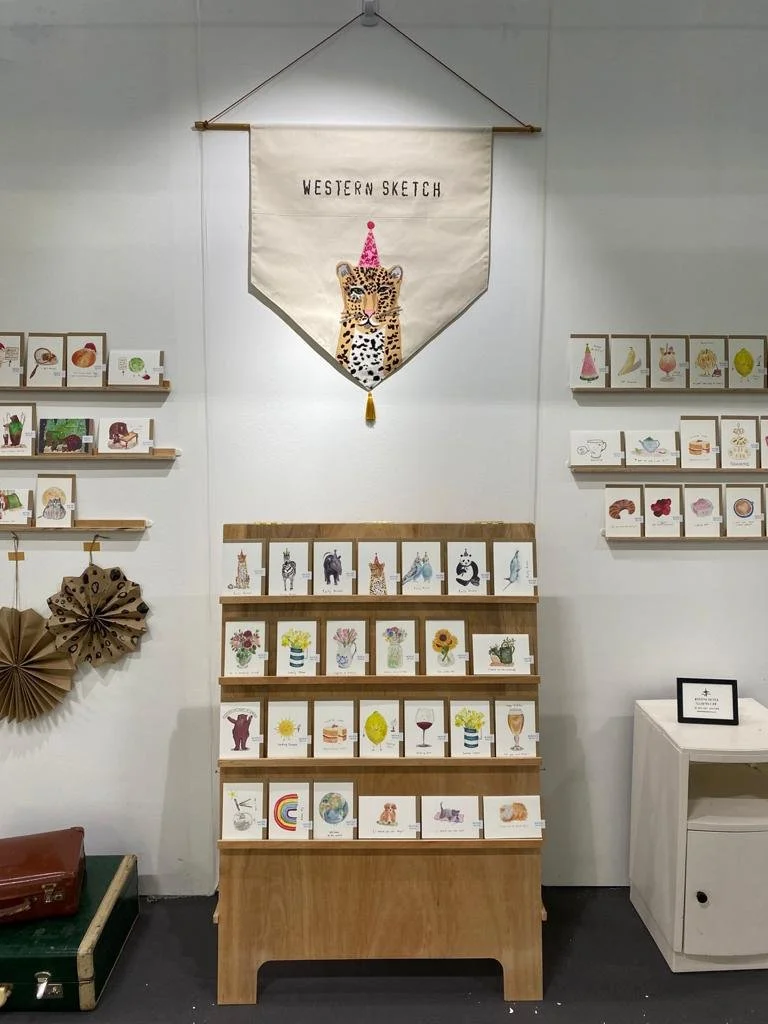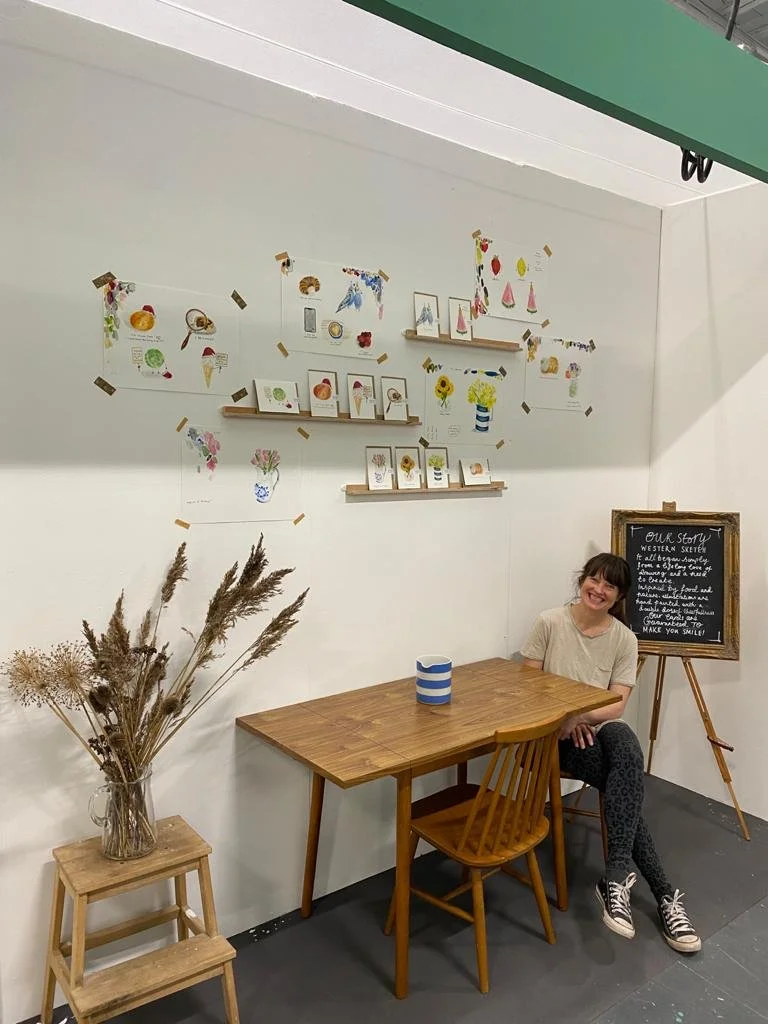Starting out in Wholesale..
As someone who has literally just started out in the world of wholesale I thought I'd share with you what it has involved and how I am finding it, with the hope that it helps others who may be thinking about selling to trade and starting out as well.
Making the decision
The decision to wholesale, is probably what came first, for me this came about from a few years experience selling my greetings cards through local markets and Etsy. I was beginning to build a bigger range of designs, had an understanding of who my customer was and what my best sellers were and so I wanted to try and expand how I could reach more customers.
A few useful things to get in place first..........
A structure to fulfil demand and large orders to a consistent standard
2. Ranges that offer choice and can be bought in collections
3. A price for both parties to make a profit
4. A catalogue to showcase products
5. Terms and conditions
6. Cashflow
7. Order form to place orders
8. Packaging and Delivering in place
9. Courier in place
10. Strategy to approach potential stockists
Why I did a tradeshow ?
I decided to launch my wholesale business at a Tradeshow, because this felt the best way for stockists to find me, having a large deadline ahead which I had spent money on meant I had to do it and it was an incentive to keep going. I work best when the pressure is on and I accomplish much more with this approach, Approaching shops on an individual basis has never worked for me and is fairly limiting especially if a local shop to you wants postcode exclusivity which i've discovered is quite common.
How much did it cost?
Doing a trade show is going to be expensive, if you want to show your products to the best stockists then it's not going to be cheap, I decided to take a stand at the Topdrawer event in Olympia London, for a few reasons. Most head offices are in London and it attracts high end retailers and buyers from the best independent shops who I wanted to pitch my products to.
The show is know to be leading the way in showing the best brands and therefore will attract a good audience. I also like the fact that Topdrawer put on a lot of retail talks from industry experts throughout the entire show which offers great value to visitors who have perhaps come a long way to attend.
I spent £2500 inc VAT (broken down as follows)
3x1m Stand £1460 ( I actually ended top with a 7x1m space for the same cost)
Bespoke made display stand and shelf brackets and fixings £125
Custom hand made display banner £155
Graphic Design for catalogue £280
Catalogue printing £110
Business card £20
Car parking £50
Spot Light £110
Insurance £100
Underground Travel £10
Food £22
Fuel £60
I made orders of £2300 (not profit)
I could have spent a lot more on the show, I saved costs by staying and parking my car for free at my friends during the 4 days I was in London, taking my own packed lunch and not painting my stand and repainting it back at the end.
My stands, shelves, banner, catalogue and insurance are all things which will either be free or cost me a lot less at future events
Other exciting opportunities have arrisen for next year which will mean I will more than cover my costs, if I then gain reorders from my current stockists then I will start making a profit
Overall I was really pleased with this.
How to price your products for wholesale..
The best place to start is with your retail price and work backwards.
If you already sell your products through your own website or similar then you have likely set a retail price that is probably going to stay the same. For example my greeting cards retail at £3, this is a fairly standard price for a premium greeting card to retail at, I wasn't going to expect stockists to sell these at a higher price although some may do. Your RRP is that a recommended retail price you are only allowed to suggest what your products are sold for. At the same time if a stockist stocks your card they won't want it to be cheaper to buy from your website.
The retailer will require a minimum of a 50% profit margin after they have paid VAT (20%) this is a common error I overlooked when I'd thought of pricing my cards for wholesale a couple of years ago. This can be called a mark up and for a retailer to achieve a 50% margin they will need to mark up by 2.5 from the cost price you sell at.
So if you simply divide your current retail price by 2.5 you will end up with a cost price to sell at which will give the desired margin, if this is not achievable for you then you may need to look at how you can get your prices into wholesale.
Most British made greeting cards tend to wholesale at somewhere between £1.00 - £1.50 depending on their size and level of special finishes.
How do you make any profit?
.Once you have got a wholesale price you will then want to work out how much profit you will make from the sale
To work out your actual cost price make sure you include all of the costs you are paying for. Printing, Product packaging, P&P (Postage and Packing) and anything else you are paying for, to produce the products that you sell this needs to go into your cost price along with how much your product costs to make.
What is left once you deduct this from the wholesale price is what profit you will make.
You will not make as much from wholesale as you would selling directly to the customer through your website but you will be selling in much larger volumes across multiple retailers which all adds up.
Setting Terms and Conditions
Some simple T+C's I have used
Pro-Forma on first payment (meaning you want payment made before you send the stock)
30 days payment thereafter (on any subsequent orders you'd switch to 30 days payment and invoice at the point of dispatch)
A minimum order cost. I opted for £50 with £80 minimum for carriage paid (so I include the delivery costs on any orders over £80)
No sale or return (you will not accept returns of your stock if out does not sell)
Shortages or damages must be reported within 7 days of receiving stock
Taking an order..
If you have an order form template in place, taking an order is fairly simple items can be selected quickly and if you can have it roll up the totals for you it saves a lot of time, I also use my order template as an invoice mine was built in Google Sheets as I don't have Excel.
Buyers want to know your prices, minimum order quantity and processing times, I aim to turn my orders around in 12-14 days as I don't hold huge amounts of stock so often have to order this from my printers to fulfil.
I took a lot of orders at the trade show, I followed up with about 20-30 leads as well but I don't think any of them placed an order,, so it was good to get the orders at the show.
I know from my experience as a buyer you have a very limited window to get your orders booked and if you can do it there and then it's the best way to work.
Once you have the order make sure to follow up and send a copy on email and if you don't think you will meet the delivery date then keep the stockist updated.



